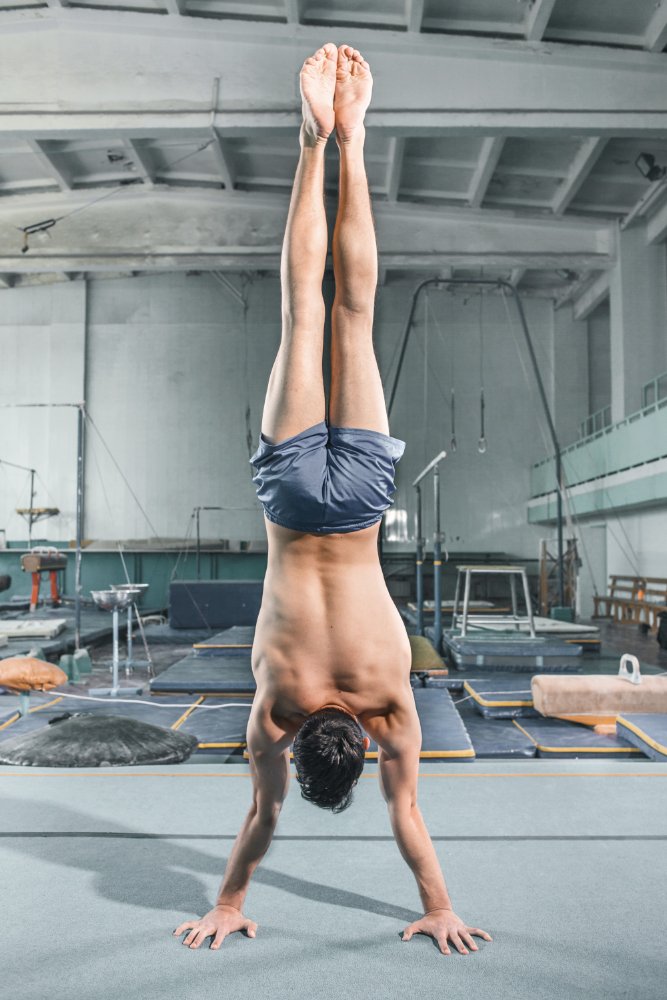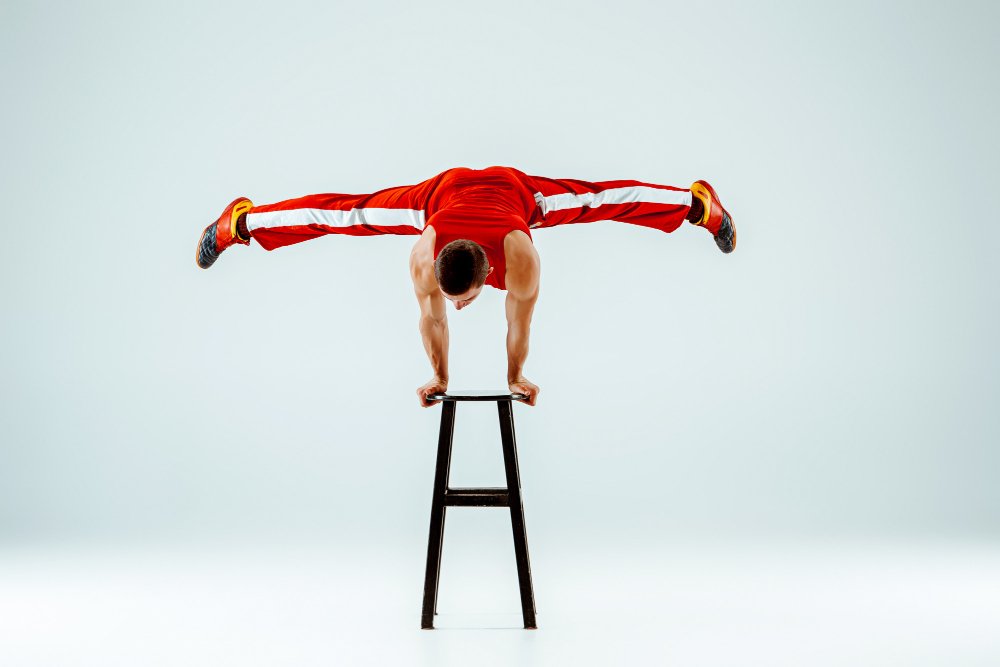Embarking on the journey of holding a handstand is not just about defying gravity; it’s a powerful practice that offers numerous physical and mental benefits. In this article, we’ll explore the art of holding a handstand, from the basics of getting started to advanced variations and the holistic advantages it brings to your overall well-being.
Getting Started

Before attempting a handstand, it’s crucial to prepare your body adequately. Begin with gentle stretches to loosen up your muscles, focusing on your wrists, shoulders, and core. Strengthening your core is fundamental for maintaining balance during a handstand.
Correct Form and Alignment
Achieving a handstand isn’t just about going upside down; it’s about doing it with proper form and alignment. Your body should form a straight line from your fingertips to your toes. Pay attention to your hand placement and engage your core to avoid arching your back.
Building Strength
Building upper body strength is a key component of mastering handstands. Incorporate exercises like push-ups, shoulder presses, and yoga poses such as downward dog into your routine. These will help develop the necessary strength and stability.
Progression Techniques
Instead of rushing into a full handstand, progress gradually. Begin with wall-assisted handstands and gradually decrease the support. Utilize props like yoga blocks to refine your balance. Consistent practice and patience are essential.
Common Mistakes to Avoid
Many beginners make the mistake of overarching their backs or neglecting wrist preparation. Take the time to understand and correct these common errors to ensure a safe and effective handstand practice.
Overcoming Fear

The fear of falling is natural, but overcoming it is essential for mastering handstands. Mentally prepare yourself and use visualization techniques to picture a successful handstand. Trust the process and embrace the challenge.
Handstand Variations
Once you’ve mastered the basic handstand, explore variations to keep your practice dynamic. Challenge yourself with a one-handed handstand or try performing a handstand on different surfaces for added difficulty.
Incorporating Handstands into Workouts
Handstands aren’t just for gymnasts. Incorporate them into your fitness routine by adding handstand push-ups or holding a handstand as part of a bodyweight workout. The versatility of handstands makes them a valuable addition to various exercises.
Benefits Beyond Fitness
Beyond the physical benefits, handstands offer cognitive advantages. Improved focus and concentration are natural outcomes of the mindfulness required to maintain balance. Moreover, the sense of accomplishment boosts confidence.
For Hips: Mastering the B Stance Hip Thrust for Maximum Gains
Addressing Challenges
It’s common to face challenges and frustrations while learning to hold a handstand. Seek professional guidance if needed and remember that progress takes time. Don’t be discouraged; every attempt contributes to improvement.
Community and Support
Joining handstand communities, either locally or online, provides a supportive environment for sharing experiences and tips. Utilize online resources, forums, and social media groups to connect with fellow handstand enthusiasts.
Safety Measures
Ensure you warm up adequately before attempting handstands to prevent injuries. Listen to your body, and if you feel fatigued, take a break. Safety should always be a priority in your handstand practice.
Celebrating Progress
Set achievable goals and celebrate even small milestones in your journey. Tracking your progress not only motivates you but also helps identify areas for improvement.
Conclusion
Holding a handstand is a challenging yet rewarding endeavor that goes beyond physical fitness. It demands strength, balance, and a resilient mindset. Start your journey with patience, practice, and a commitment to both the process and the progress.
Frequently Asked Questions (FAQs)
- How long does it take to learn to hold a handstand?
- Learning times vary, but consistent practice can yield results in a few weeks to months.
- Are handstands suitable for everyone, regardless of fitness level?
- Handstands can be adapted for different fitness levels, but beginners should start with proper preparation.
- Can I practice handstands if I have a history of wrist injuries?
- Consult with a healthcare professional before attempting handstands with a history of wrist injuries.
- What should I do if I can’t overcome the fear of falling?
- Start with wall-assisted handstands, gradually reducing support to build confidence.
- Are handstands beneficial for mental health?
- Yes, the focus and mindfulness required for handstands can contribute to improved mental well-being.

